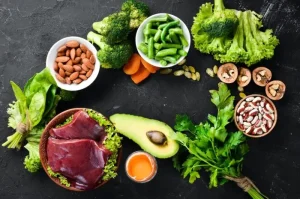The Atkins Diet Plan, developed by Dr. Robert C. Atkins, has gained recognition as a low-carbohydrate approach to weight loss and better metabolic health. With its focus on reducing carbohydrate intake and increasing protein and healthy fats, the Atkins Diet Plan has helped countless individuals achieve their weight loss goals.
In this comprehensive guide, we will explore the various phases, food choices, and potential benefits of the Atkins Diet Plan, providing you with the knowledge needed to embark on a successful journey towards improved health and well-being.
1. Induction Phase
The Induction Phase is the initial and most restrictive stage of the Atkins Diet Plan. Its primary objective is to induce ketosis, a metabolic state where the body shifts from using carbohydrates for energy to burning stored fat. During this phase, carbohydrate intake is limited to approximately 20 grams per day, derived mainly from non-starchy vegetables. This restriction initiates rapid weight loss, controls blood sugar levels, and reduces cravings.
Recommended Foods:
- Protein: Include sources like lean meats, poultry, fish, and eggs.
- Healthy Fats: Opt for sources such as avocados, olive oil, nuts, and seeds.
- Non-Starchy Vegetables: Consume leafy greens, broccoli, cauliflower, peppers, and more.
- Beverages: Stay hydrated with water, unsweetened tea, and coffee.
2. Ongoing Weight Loss (OWL) Phase
The OWL Phase aims to achieve continuous and steady weight loss while introducing a wider variety of foods. Carbohydrate intake is gradually increased by 5 grams per week to identify an individual’s Critical Carbohydrate Level for Losing (CCLL). This phase continues until nearing the desired weight goal.
Recommended Foods:
- Continue consuming the foods from Phase 1 while gradually incorporating small portions of nutrient-dense carbohydrates such as berries, nuts, seeds, and certain dairy products.
3. Pre-Maintenance Phase
The Pre-Maintenance Phase focuses on finding an individual’s Critical Carbohydrate Level for Maintenance (CCLM). Carbohydrate intake is further increased, allowing for a broader range of food choices, while still maintaining weight loss.
Recommended Foods:
- Continue the food choices from previous phases, including a wider selection of fruits, whole grains, and legumes.
4. Lifetime Maintenance Phase
The Lifetime Maintenance Phase emphasizes long-term weight management and overall health. At this stage, individuals have achieved their weight loss goals and can maintain their progress by adhering to a sustainable and balanced eating plan.
Recommended Foods:
- Incorporate a variety of whole foods, including lean proteins, healthy fats, complex carbohydrates, fruits, vegetables, and whole grains. Portion control and mindful eating are crucial for maintaining weight loss.
5. Benefits of the Atkins Diet Plan
- Weight Loss: The Atkins Diet Plan has proven effective for weight loss due to its emphasis on controlling insulin levels and promoting fat burning.
- Improved Metabolic Health: By reducing carbohydrate intake, the diet may improve insulin sensitivity and help stabilize blood sugar levels, benefiting individuals with diabetes or metabolic syndrome.
- Increased HDL Cholesterol: The diet’s higher protein and healthy fat content have been associated with elevated levels of “good” HDL cholesterol, reducing the risk of heart disease.
- Reduced Triglycerides: Carbohydrate restriction tends to lower triglyceride levels, which can contribute to better heart health.
- Enhanced Satiety: The higher protein and fat content of the diet help promote satiety, reduce cravings, and control overall calorie intake.
6. Potential Concerns and Considerations
- Nutrient Deficiencies: Restricting carbohydrates may lead to potential deficiencies in fiber, certain vitamins, and minerals. Careful food choices and, if necessary, supplementation can address these concerns.
- Individual Variation: The response to the Atkins Diet Plan may vary among individuals. Some may experience rapid weight loss and improved health markers, while others may encounter challenges or side effects.
- Long-Term Sustainability: Adherence to the dietary restrictions and transition to a balanced eating plan in the later phases can be challenging for some individuals.
Conclusion
The Atkins Diet Plan offers a structured approach to weight loss and improved metabolic health by reducing carbohydrate intake and emphasizing protein and healthy fats. With its four distinct phases, this diet allows individuals to gradually reintroduce carbohydrates while achieving sustainable weight loss.
It is important to consider individual needs, long-term sustainability, and potential nutrient deficiencies when embarking on this diet. As always, consulting with a healthcare professional or registered dietitian is advised to ensure that the Atkins Diet Plan aligns with your specific goals and health conditions.











